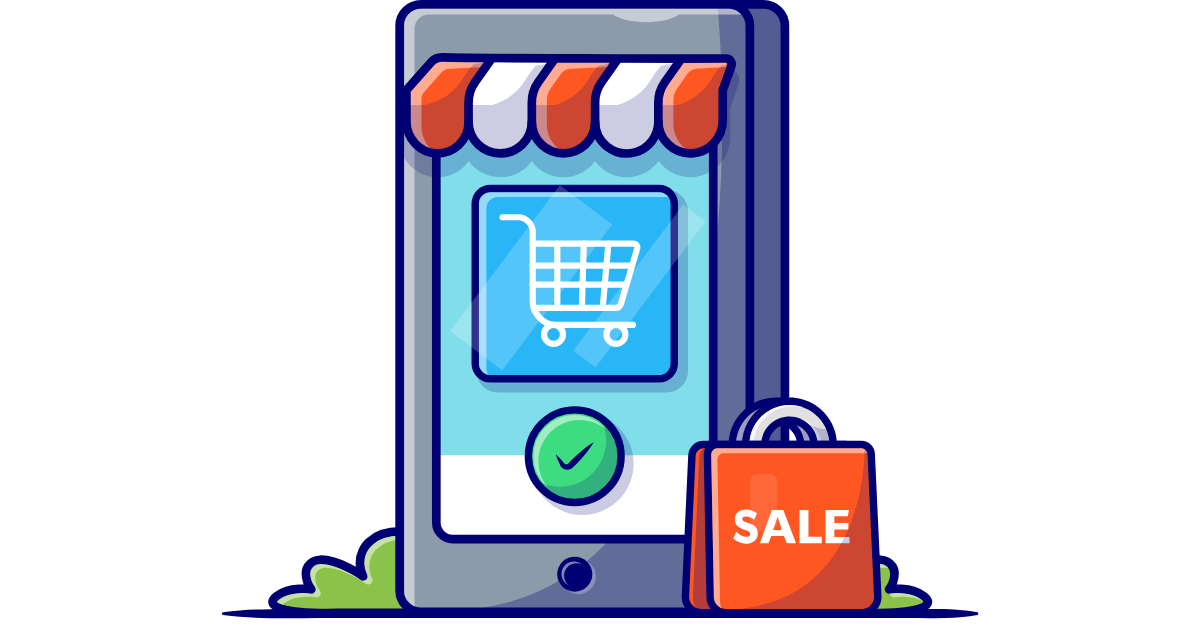The rise of a cookieless world signals a transformative shift in digital marketing. Without third-party cookies, how will businesses track and target audiences? This article explores practical alternatives and strategic turns necessary for success in a landscape reshaped by privacy-first initiatives and user autonomy.
Key takeaways
- The demise of third-party cookies due to increased privacy concerns and regulatory changes is forcing marketers to adapt by focusing on first-party data collection, consent management, and exploring alternative data tracking methods.
- Marketers are pivoting to strategies like incrementality testing, AI-powered predictive messaging, contextual advertising, and transparent data practices to engage users and personalize campaigns in the absence of third-party cookies.
- Businesses preparing for a cookieless world must invest in new technologies such as Google Analytics 4 for server-side tracking, embrace alternative identifiers that rely on user consent, and focus on building customer trust through transparency and personalized marketing.
Understanding the cookieless world

But what does a cookieless future really mean? It refers to a reality where third-party cookies are no longer part of the marketing toolkit, impacting:
- User tracking
- Lead generation
- Ad retargeting
- Understanding user behavior.
This shift away from third-party cookies is driven by evolving privacy landscapes in programmatic advertising and increased concerns over user privacy.
According to a KPMG survey, it is a significant concern for 86% of US consumers regarding the amount of data collected by businesses. This reflects a growing awareness of privacy issues. Regulatory changes and privacy concerns are influencing digital marketing, leading to the decline of third-party cookies and the need for new marketing strategies.
The shift from third-party cookies
Major web browsers like Apple Safari and Google Chrome, influenced by a growing emphasis on user privacy, have announced measures to block or phase out third-party cookies. Features like Safari’s Intelligent Tracking Prevention (ITP) and Mozilla Firefox’s Enhanced Tracking Protection (ETP) are pioneering these changes, automatically blocking third-party cookies.
Google’s decision to end support for third-party cookies was influenced by existing pressure from other browsers like Safari and Firefox and aligns with the broader industry move towards enhanced privacy.
Privacy concerns and regulations
Global privacy laws such as GDPR in Europe and CPRA in California have established new standards for user privacy and data security, leading to changes in how personal data is collected and used. These regulations have introduced substantial compliance requirements, with heavy fines for non-compliance, influencing companies to modify their digital advertising strategies, particularly around the use of third-party cookies and user data collection.
Privacy concerns include the unauthorized collection and potential misuse of personal and sensitive information, prompting regulatory bodies to take action for greater transparency in the use of cookies and online tracking.
Consent management is crucial, as demonstrated by regulations that mandate explicit opt-in consent for data collection, making it necessary for organizations to ensure that their consent frameworks are both user-friendly and transparent.
Adapting your marketing strategies for a cookieless future

Businesses need to adjust their marketing strategies to fit a cookieless future. This involves:
- Diversifying marketing approaches
- Enriching data over time using first-party platforms like CRMs
- Implementing robust data-capturing mechanisms for targeting and personalization of marketing to engaged users.
Incrementality testing and predictive messaging powered by AI can reduce reliance on cookies by evaluating campaign impact and enhancing ad personalization. Businesses can also leverage alternative data without substantial investments by partnering with trusted publishers who collect comprehensive first-party data and working with brand safety detection vendors.
Leveraging first-party data
First-party data collection has become more critical than ever for digital marketing. It directly influences personalized ad campaigns, enhances user satisfaction, and ultimately drives higher conversion rates. Brands can gather first-party data through direct methods such as email marketing, loyalty programs, social media engagement, and the usage of analytic tools to gather user behaviors without relying on third-party cookies.
Utilization of first-party data, also known as own data, can lead businesses to double their ad revenue and improve cost efficiency by 1.5 times through optimized targeting and personalized marketing strategies. Interactive engagements such as quizzes, surveys, and online communities help businesses collect zero-party data and foster deeper brand relationships and advocacy. By comparing the effectiveness of these methods with third-party data, marketers can make more informed decisions about their marketing strategies.
Encourage customers to set up an account during their initial purchase by offering appealing incentives such as special discounts, loyalty points, or access to exclusive content. Make sure the account creation process is straightforward and stress the advantages of having an account, including quicker checkouts, easy order tracking, and tailored product recommendations.
Alternatively, consider enticing new subscribers with a unique introductory offer, such as a discount on their initial purchase, complimentary shipping, or a bonus gift included in their upcoming order. Engage them with subscriber-only contests or sweepstakes. Provide early-bird access to your newsletter community for upcoming sales events, exclusive promotions, or sneak peeks at new product releases.
Building trust through transparency
In the cookieless world, establishing trust via transparency holds utmost importance. Transparency in data usage and securing explicit consent from users are fundamental to building trust and maintaining ethical standards in the collection of zero-party data. Progressive profiling exemplifies a transparent approach to customer data collection, fostering trust and long-term customer relationships.
Ensuring compliance with privacy regulations like GDPR is a key component of maintaining transparency in data collection, not only to avoid penalties but also to protect user privacy and build customer trust. Marketers can capitalize on consumer sentiments towards data privacy by voluntarily phasing out third-party cookies, demonstrating transparency, and providing clear information about their data usage policies.
Alternative tracking methods

Transitioning to a cookieless world necessitates the exploration of alternate tracking methods. These include:
- Device IDs
- IP addresses
- Device fingerprinting
- Hashed emails
- Mobile ad IDs.
On social media, marketers can employ strategies such as contextual targeting, cohort-based targeting, and lookalike audiences to reach relevant users without third-party cookies. Changes like the iOS 14 update, which restricts app data collection, challenge Facebook’s ability to show targeted ads to iPhone users, representing how platform-specific updates affect ad targeting and campaign effectiveness advertisers seek.
Device IDs and IP addresses
AI and machine learning serve as alternative methods for predicting user behavior in a cookieless environment. These technologies can analyze non-cookie data, potentially including anonymized device IDs and IP addresses, to tailor content and recommendations.
Adopting AI and machine learning for personalization aligns with privacy concerns and reduces dependence on third-party cookies.
Contextual advertising
Contextual advertising is the practice of placing ads on a webpage based on the content present, utilizing information such as website topics or keywords. By aligning advertisements with the webpage content users are interested in, contextual advertising increases ad relevance and engagement. It is likely to result in higher viewability rates compared to other targeting techniques.
The sophistication of online advertising, particularly contextual advertising, is growing, with advanced algorithms now capable of analyzing both content and user interaction to tailor relevant advertisements without the need for cookies. Given the shift away from third-party cookies, contextual advertising represents a critical solution in cookieless marketing strategies, making it highly relevant for future digital marketing endeavors.
Instead of utilizing user data for ad delivery, contextual advertising selects advertisements based on the content of the webpage or application that the user is engaged with at the moment. Because contextual marketing does not rely on tracking individual users, collecting their data, or targeting them directly, it remains unaffected by privacy laws.
Consent-based identifiers
Alternate identifiers rely on user consent to respect user privacy and align with the spirit of a cookieless future, featuring components like hashed emails and mobile ad IDs instead of third-party cookies. Hashed emails, which convert email addresses into a unique 32, 40, or 62-character code, demand user consent thereby giving users more control over their data with improved privacy over third-party cookies.
Mobile ad IDs facilitate precise audience matching. The benefits of using mobile ad IDs include:
- Facilitating precise audience matching
- Enhancing targeted advertising
- Supplementing data protection
- Mirroring the objectives of GDPR compliance.
Customer data profiles
Customer data profile (CDP) is essential to modern digital marketing strategies. It serves as a comprehensive representation of customer information, which includes demographic details, purchasing history, online behavior, and preferences. This profile enables businesses to tailor their marketing efforts more precisely to individual needs and interests, enhancing the customer experience and increasing the likelihood of conversion. The richer the CDP, the better marketers can understand and anticipate customer needs, which is especially crucial in a cookieless world where traditional tracking methods are no longer viable.
Using CDP helps centralize all first-party data, which paves the way for a detailed understanding of each customer. This central repository not only augments the effectiveness of personalized marketing efforts and the customer experience but also bolsters the precision and efficiency of data analytics.
Enhancing customer relationships

In a cookieless world, the enhancement of customer relationships revolves around personalization and engagement. Brands should focus on transparency and data privacy to build customer trust, clearly communicating how customer data is used and ensuring privacy policies are easy to understand.
Consumers increasingly prefer to shop with brands that offer personalized experiences, emphasizing the need for businesses to personalize their customer interactions. Responding to online reviews demonstrates a brand’s commitment to addressing concerns and improves transparency, fostering trust and encouraging customers to share their data.
Personalized marketing
First-party cookies, created by the website being visited, are instrumental in remembering user preferences, thus enabling personalized marketing campaigns that are respectful of user privacy. With the end of third-party cookies, marketers can achieve personalized advertising by harnessing zero-party data that is explicitly shared by customers, along with first-party data, to design targeted marketing strategies.
Conversational marketing involves:
- Engaging consumers in personalized, dialogue-driven experiences on a one-to-one level
- Being a crucial part of personalized marketing strategies
- Using insights derived from social media pages to guide personalized customer outreach efforts, enhancing the effectiveness of marketing campaigns.
Engaging with customers on social media
Social media platforms play a crucial role in marketing and sales with built-in activity tracking tools. These platforms enable businesses to engage with customers where they are most active and gather significant first-party data.
Embracing brand trust and transparency on social media enhances consumer confidence, and fosters an environment where customers are more comfortable sharing their data, knowing it will be used responsibly. Companies can use social media for:
- Market research, gathering insights through audience interactions
- Conducting A/B testing to refine marketing strategies
- Better understanding of consumer preferences
- Highly tailored marketing efforts.
This allows for a better understanding of consumer preferences and highly tailored marketing efforts.
Develop engaging content that motivates audience interaction with your brand, such as informative blog posts, instructional guides, tutorial videos, and educational webinars. Encourage data sharing by offering exclusive access to comprehensive resources or subscriptions to newsletters in exchange for providing an email address.
Preparing for the challenges of a cookieless world

Businesses need to prepare for the cookieless future to effectively adjust and succeed in the constantly changing digital marketing scenario. Businesses face significant challenges in tracking and mapping out customer journeys as they transition away from relying on cookies. However, they can explore strategic partnerships, affiliate commissions, and referral payouts to improve marketing efforts without cookies.
Adopting tools such as Adobe Analytics and employing techniques like audience segmentation and machine learning can improve data collection and analysis capabilities in preparation for a cookieless world.
Data collection and analysis
Digital marketers are actively planning for the deprecation of third-party cookies, with efforts to adopt cookieless attribution techniques including device fingerprinting, and relying on tools like Google Analytics 4 for server-side tracking. Investing in AI and machine learning technologies is crucial for data analysis in a cookieless world, enabling marketers to leverage algorithms and gain timely advertising insights that help identify effective messaging for target audiences.
To ensure compliant data practices, marketers can consider the following tips:
- Conduct data audits to create data flow maps and identify areas for improvement in data management systems.
- Modify data management systems to handle access and deletion requests from customers.
- Employ data integration solutions to unify customer profiles and improve data accuracy.
- Enhance personalization techniques through server-side tagging to collect and analyze customer data.
- Invest more in market research, such as surveys and feedback collection, to gather insights and personalize marketing campaigns in the absence of third-party cookies.
By following these strategies, marketers can ensure compliance with data regulations and continue to deliver personalized marketing experiences.
Adapting to new technologies and platforms
Navigating the cookieless world significantly involves adapting to new technologies and platforms. Google Analytics 4 enables marketers to track users across apps and websites without third-party cookies and supports cookieless attribution through server-side tagging. Marketers should become proficient in Google Analytics 4, leveraging its advanced reports and data collection capabilities for effective analysis in a post-cookie era.
Using geotargeting and time-based marketing offers personalization options in target advertising without depending on third-party cookies. Privacy-enhancing technologies like federated learning and differential privacy present new avenues for data sharing with user privacy intact.
Collaborative efforts within the advertising industry are focusing on establishing new standards for tracking and user data management in a world without third-party cookies.
Summary
In summary, the transition to a cookieless world brings new challenges and opportunities. As third-party cookies phase out, businesses must adapt their marketing strategies, focusing on first-party data, building trust through transparency, and leveraging alternative tracking methods. By enhancing customer relationships through personalized marketing and engaging with customers on social media, businesses can thrive in this new era.
Preparing for a cookieless world involves improving data collection and analysis capabilities and adapting to new technologies and platforms. As we embrace this change, let’s remember that at the heart of every marketing strategy should be respect for user privacy and a commitment to deliver value to the customer.
Frequently Asked Questions
What is meant by a cookieless world?
A cookieless world refers to a marketing approach that reduces reliance on third-party cookies, which are used for tracking consumer behavior online. This shift aims to protect consumer privacy and limit data exchange between advertisers.
How do you prepare for a cookieless world?
Prepare for a cookieless world by embracing data privacy and transparency, prioritizing first-party data, utilizing social listening, strengthening organic and community-driven efforts, and utilizing alternative targeting methods. Consider partnering with Khoros for a social media management suite.
What are the implications of a cookieless world?
The implications of a cookieless world are significant changes in tracking user behavior and targeting ads, leading to a greater reliance on first-party data and alternative user identifiers. Advertisers will need to adapt to limited access to user data and rely on alternative targeting methods.
Is Google going cookieless?
Yes, Google has started to phase out third-party cookies and plans to escalate the phaseout to 1% in Q1 2024, with a goal of 100% by Q3 2024. This presents companies with an opportunity to reconsider their data collection methods.
Why are third-party cookies being phased out?
Third-party cookies are being phased out due to concerns over user privacy and evolving privacy landscapes in programmatic advertising.
Need to adapt your digital strategy for the upcoming cookieless future? Contact us, and let’s eliminate third-party cookies from your digital marketing game!



Share on: